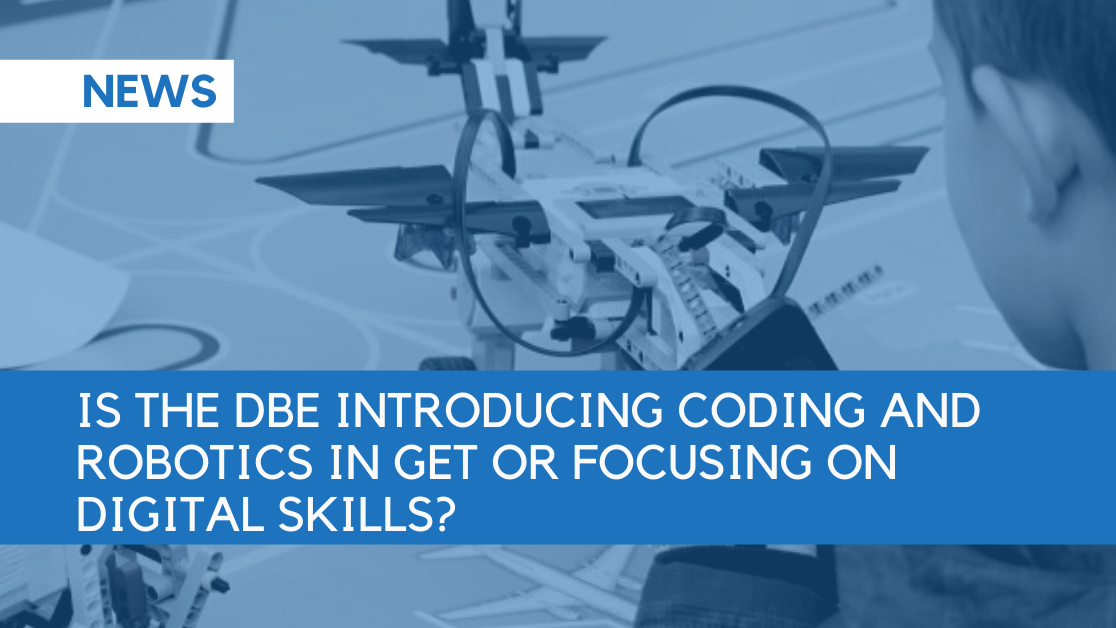The South African government announced that a coding and robotics curriculum will be compulsory in GET (general education and training) from Grade R to Grade 9. As part of this, multiple coding and robotics curricula will be piloted with Grade 1 to 3 learners, in selected schools across the country in 2020.
This brings uncertainty to schools that are in a situation of looking for partners and solutions. However, one of SchoolAdvisor’s top-rated coding and robotics suppliers, SA SchoolCoding, was part of an advisory panel for the DBE. SchoolAdvisor met with Mauritz Kotzé of SA SchoolCoding to find out how schools are meant to implement coding and robotics into their curriculum. They also found out more about what his company can offer schools.
Q1: How was SA SchoolCoding involved with the Department of Basic Education?
A: SA School Coding was teaching coding and robotics to Grade 8 and 9 learners at Oude Molen High School, where members from the DBE and WCED visited. After seeing what we were doing in the school, the DBE asked if we could become part of an advisory panel.
This lead to us assisting the DBE with how to incorporate coding and robotics in GET during the March school holidays.
Q2: Why did the DBE ask you to be involved?
A: As an IT primary school teacher in the Western Cape, I identified that children had little knowledge of digital skills. And, after inquiring at other schools, I discovered that most children were simply given an educational game (or something similar) as their IT lesson.
I saw the potential to enhance learning and, instead of playing an educational game, I taught children that they had to make the game first. Thus, my motto was born: “We don’t PLAY Games, We MAKE Games.”
Through making games, children acquire digital skills, solve problems, develop critical thinking skills and enhance specific maths and language skills. Our lessons are developed and designed with Bloom’s Taxonomy in mind. At the end of 2016, I resigned from teaching at the WCED and began working full time for myself, teaching children digital skills, coding, and robotics (the start of SA School Coding).
This experience and how we taught showed the DBE we could help in advising how to handle this new curriculum. This is why they asked us to be involved.
Q3: From your sessions with the DBE, how are they looking to implement coding and robotics?
A: Firstly, it is important to know it is about ‘Digital Skill’ development for primary schools. Digital skills refer to a range of different abilities, many of which are not only ‘skills’ per se but a combination of behaviours, expertise, know-how, work habits, character traits, dispositions, and critical understandings. Examples of digital skills include coding, innovation, computational thinking and other 21st-century skills. Currently, very few matriculants are taking IT and Computer Applications Technology (CAT) as an elective where digital skills can be developed.
In this fast-paced developing world, the Minister of Education wants to develop digital literacy skills at a primary school level in order to properly equip them. Digital skill development is, therefore, being implemented by the DBE in primary schools.
In high schools, more emphasis will be on coding and robotics in the existing Technology subject (Grade 7-9). A new coding curriculum may be developed for the FET phase, but during the March session, it was only mentioned as a possibility.
Q4: How have you implemented this understanding of Digital Skills in the way you teach coding and robotics at schools?
A: Digital skills and literacy are incorporated into our program through the coding software we use. Our software is free to download and install on learner’s PCs. We work with Microsoft Office and Windows since most Provinces have signed the Microsoft School Agreement.
The skills acquired in the computer class are not isolated from the rest of the curriculum, but instead, support it. As we have assisted the DBE with the proposed draft coding curriculum, we have made sure to align our content accordingly.
We even try to link Powerpoint lessons to coding and enable children to use their acquired computer skills in other school subjects, such as Geography and Mathematics.
Q5: Do teachers need to know how to code to teach using your program?
A: There is no coding experience required, just the willingness necessary to be trained. We provide schools with all lesson content needed and necessary training while offering continuous support. Teachers can rewatch our video lessons at their own pace and prepare themselves accordingly. We partake with the teacher and the learners on their digital skills, coding and robotics journey.
Q6: What schools are currently using your program?
A: Since 2013, we have developed a program for the GET phase, assisting children in developing much-needed digital skills. At present, 9 schools make use of our program:
- Laerskool de Tyger
- Brackenfell Primary School
- Welgemoed Primary School
- Eversdal Primary School
- Pinelands North Primary
- Sweet Valley Primary
- Rondebosch Boys Prep
- Meridian Pinehurst (Private school)
- Oude Molen Academy of Science and Technology
Q7: How much does it cost to implement your program into schools?
A: The price varies, depending on the number of learners at the school and the number of teachers whom we need to train. For example, it will cost a school with 500 learners: R120 per child per year. It will cost a school with 750 learners: R80 per child per year. Our robots are sold separately at R1500 per unit.
If you are interested in SA SchoolCoding’s digital skills and coding and robotics program, contact Mauritz Kotze (info@schoolcoding.co.za)




